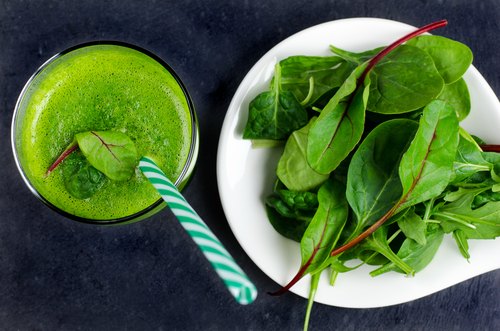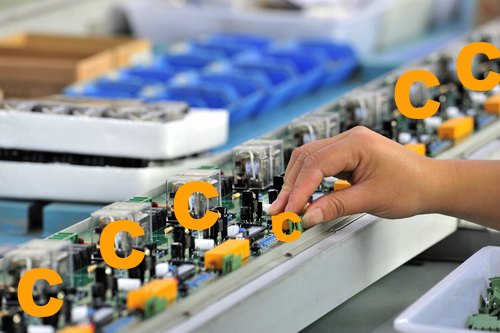These are the vitamins that are discussed in depth in this Part ( Including the elusive ‘Vitamin B4’)
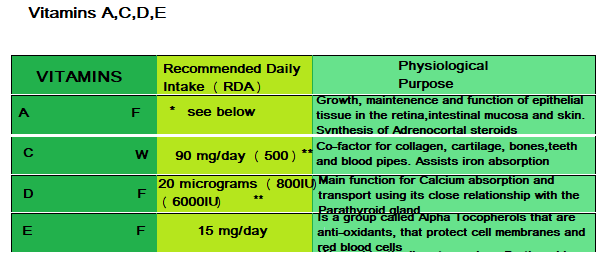
Vitamin B4 (Adenine)

Before, we begin our discussion of these main vitamins there was one B vitamin that I omitted in the previous parts for a reason, mainstream nutritional science dismiss its importance and indeed that it’s not a vitamin at all.
However, the Canadian academy of sports consider it a vitamin which is also called Adenine which is water soluble.
You may recall that Adenine is a component part of DNA/RNA along with Thymine, Cytosine and Guanine.
Adenine can be synthesized in the body by Vitamins B3( Niacin) and B9 ( Folic Acid).
Adenine is also used in energy production as a cofactor for the production of Nicotinamide adenine Dinucleotide (NAD) which is a Niacin coenzyme for energy creation shown on diagram 1 Part 2, and Flavin adenine Dinucleotide (FAD) which is a Riboflavin coenzyme for Fat burning shown on diagram 1 Part 2.
NAD is also used for protein synthesis, and is a constituent part of our energy ‘currency’ ATP ( Adenosine Triphosphate ).
ATP is the molecule that carries energy to where it is needed within the cell for protein synthesis, membrane synthesis, cell movement, and cell division.
This ‘Vitamin’ , although the body can synthesis it, is also available from food’ including Brewer’s yeast from the health food store which is supplemented by some to extract Chromium.
Other food sources include whole grains, Bee pollen (known as Ambrosia, formed into pellets by drones that unload the pollen gathered into the hive and used as a food for workers and larvae) , Royal jelly (Honey bee secretion to provide larvae with nutrition). Propolis (Bee glue made from beeswax, secreted by the bees and drones to form honey storage cells, and saliva used by the bees to seal open spaces in the hive), Spirulina (sea algae in powder form), Aloe Vera, Green leafy vegs, Honey and some spices like Cayenne pepper, Cinnamon and Ginger.
Another biological function is for the heart.
An enlarged heart is caused by deficiencies in various nutrients that include Selenium and Vitamin B4.
An enlarged heart also known as Athlete’s heart, causes the various valves and arteries to stretch out and cause heart murmurs, B4 helps ‘snap’ the heart back into place.
ProVitamin A
I believe that most people are aware of the orange colors in fruit and vegetables such as Peppers, Carrots, Mangoes, Papayas that are associated with βCarotene.
The family of Carotenoids are known as Provitamin A.
The other members of the Carotenoid family are αCarotene, a fat soluble substance found in:
- Pumpkin (100g=2715μg = 1/2 cup chopped),
- Carrots (100g=3776μg = 3/4 cup chopped) ,
- Winter squash (100g=1130μg = 1/4 cup),
- Tomatoes (100g=101μg),
- Napa cabbage (100g=49μg) (Kimchi fame),
- Swiss chard
- Collards (100g=45μg)
- Green beans (100g=55μg),
- Tangerines (100g=101μg),
- Sweet peppers (100g=21μg)
- Podded peas (100g=53μg)
- and βCrytoxanthin (substance found in citrus fruit, peaches, Mangos,Papaya and apricots).

Preformed Vitamin A
The other family of Vitamin A are referred to as Preformed vitamin A which include Retinol and Retinyl Ester (this type of Vitamin A is found in animal sources such as dairy, fish and meat (liver is a good source)).
Both types of Vitamin A (preformed and provitamin) must be converted to an active form that the body can use which is Retinal and Retinoic acid.
Most of the body’s Vitamin A is stored in the liver.
The RDA for Preformed Vit A Retinol (Animal source) = 900μg/day, while Provitamin A = 1800μg /day and both αCarotene and βCrytoxanthin = 10,800μg /day.
The other 3 carotenoids that have been heavily studied are Lutein, Zeaxanthin and Lycopene. These 3 carotenoids are not converted in the body into Retinol or Retinoic acid.
In total this is 6 carotenoids that we have some evidence of, but very little knowledge of the hundreds of carotenoids that exist in nature.
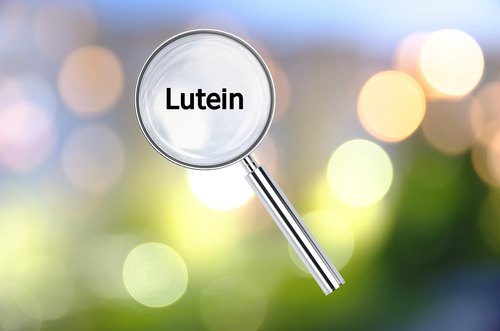
Lutein
In plants, carotenoids are used as antioxidants; Lutein for example is a Xanthophyll found in Spinach, Kale and Yellow carrots and this substance modulates light energy to control (photochemical quenching) the overproduction of Chlorophyll ( the magnesium based blood of the plants ).
Lutein is also found in Papaya,peaches,prunes and squash.
Animals, like ourselves use Lutein as an antioxidant and protection from blue light absorption and its release of free radicals.
Lutein is a yellow substance that makes egg yolks yellow (No it is not the sulphur in egg yolks that make it yellow which was a question that Dr Mercola asked Stephanie Seneff during one interview).
It is the Lutein in Chicken skin and fat that makes it yellow also, which is added to the chicken feed since chickens do not consume plants.
Lutein absorbs blue light so its color is yellow in low concentrations and orange red in high concentrations.
Zeaxanthin
Zeaxanthin has the same chemical structure as Lutein and is also a Xanthophyll because it contains oxygen (βCarotene αCarotene and βCrytoxanthin do not contain oxygen).
Both Lutein and Zeaxanthin are important for the eye since the latter is the most dominant within the Central Macular (responsible for central high resolution color vision) and the former is the most dominant in the Peripheral Retina (optics in the eye produce our images of our environment onto the retina much like the film in a camera).
So when your mother said carrots were good for vision it was probably a reference to the Xanthophyll Carotenoids.
The highest quantity of Zeaxanthin like Lutein is found in:
- Green leafy vegetables including Kale(100G =39,550μg) ,
- Spinach (100G =12,198μg),
- Turnip greens (100G =12,800μg),
- Collard Greens (100G =7694μg),
- Romaine lettuce (100G =2312μg),
- Watercress (100G =5767μg),
- Swiss chard (100G =11,000μg)
- Dandelion leaves (100G =13,610μg),
- Brussel sprouts (100G =1590μg),
- Hard boiled egg (100G =353μg),
- Zucchini (100G =2125μg)
It also is contained in Saffron a red string type spice that Asian Indians use in Basmati rice which turns it yellow (very delicious with Thai Salmon or Tandoori Masala), and the red color in Goji Berries (Chinese use these nutritious berries in tea).
Some estimate a dietary intake of 2-10mg/day is sufficient, especially to protect the eyes and potentially prevent macular degeneration, although supplementing with all 90 essential nutrients may be a better plan.
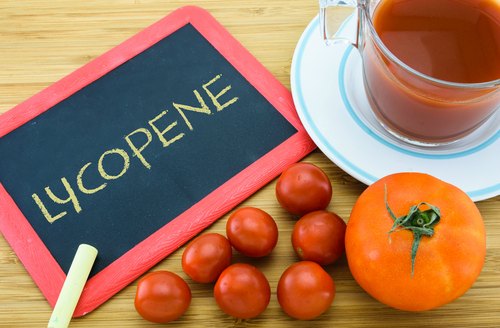
Lycopene
Lycopene is primarily found in tomatoes (100G =3041μg), Guava (100g of guava contain approx 5204μg), Papaya (100G=1828μg) Watermelon,Grapefruit, rose hips, Asparagus.
Lycopene is also an antioxidant and is often touted as a prevention for prostate cancer because it quenches the free radicals that cause prostate cancer.
However, the distribution of Lycopene in the body includes the liver, Kidney, Adrenal, Testes, Ovary, Adipose tissue, Lung, Colon, Breast and the skin, but not the prostate, and in fact 2011 Cochrane review found no evidence toward Lycopene having any effect on any prostate condition.
My understanding is that prostate cancer is a hormonal triggered cancer caused by excess Estradiol which is a form of estrogen that can damage DNA in the same way as breast tissue damage in Breast cancer.
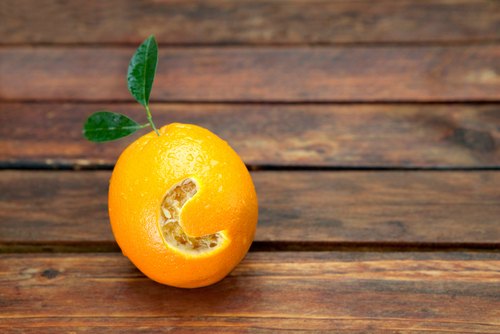
Vitamin C
Like Vitamin A and the carrots story, everybody knows the Vitamin C and the scurvy/limey story, even I have been called a Limey….why?
I don’t believe I was related to any of the 16th century British sailors who were dying of the disease or even Captain Scott’s team who were Antarctic explorers who also died of scurvy in 1912.
Yet Jacques Cartier and his crew, whom I may be related to since my Father’s ancestors came from St Malo were cured of Scurvy by the natives in Newfoundland with tea made from pine in 1530.
Dr. Bergman relates the story of one patient who had undergone cancer treatment in Mexico receiving 100,000mg of Vitamin C intravenously that had left him with bloody gums, shortness of breath, skin bruising which are typical symptoms of scurvy..ironically Vitamin C deficiency, which obviously he was not absorbing.
Vitamin C or Ascorbic Acid
There appears to be ‘quite’ a feud going on with respect to a naming convention..there are the Vitamin C campaigners and the Ascorbic acid campaigners and never the two shall meet.
I believe it is just a name argument and that both sides appreciate that Vitamin C is a complex as found in nature, depicted in Diagram 1 below.
I do not see what all the fuss is about, if you call Vitamin C, Vitamin C complex or just Vitamin C or Ascorbic acid, the natural complex is what it is, unless you purchase synthetic Vitamin C or Ascorbic acid, when the chances are, especially if the tablets are >100 mg/tablet, they are made from Corn starch and sulphuric acid which will acidify the body and might kill a pathogen or two.
After all is was Albert Szent Gyorgyi, Hungarian physiologist (1893-1986) that named it Ascorbic acid in 1937 and was awarded the nobel prize for it so this is irrefutable evidence that Ascorbic acid is Vitamin C.
Diagram 1 Vitamin C complex
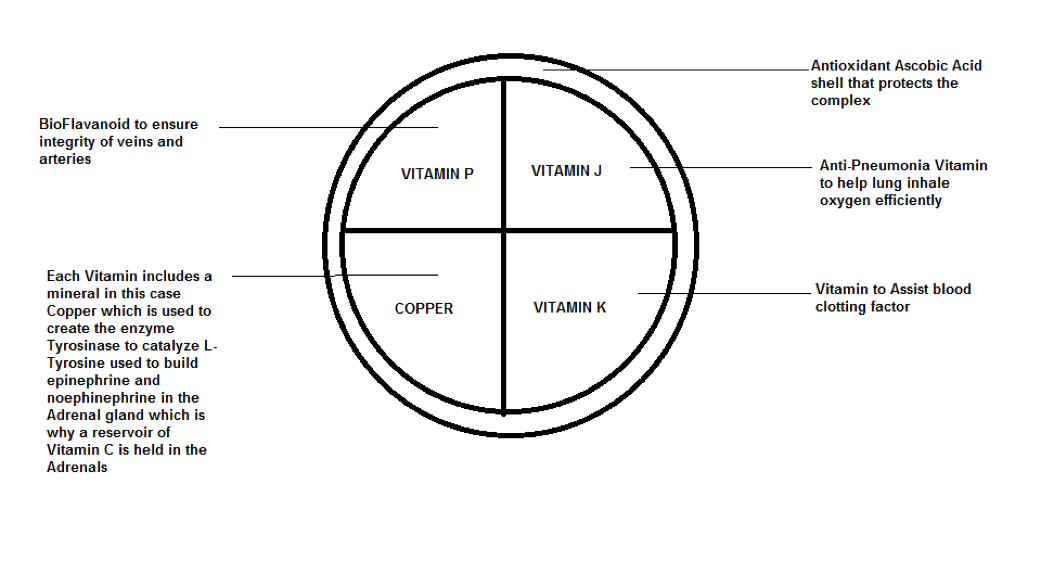
Vitamin C Production
Plants themselves cannot grow without Vitamin C because they need it for stress control during extreme drought and UV light protection.
Vitamin C in humans is used also to protect against stress (Oxidative), tissue growth and repair, and assists in collagen (main protein building block for skin, cartilage, blood vessel, tendon, and ligaments) manufacture.
It is a powerful antioxidant and aids iron absorption.
We, like Guinea pigs, Capybaras (I know I had to look it up too, well it’s the biggest rodent on the planet, and it looks like a beaver minus the beautiful tail), Indian fruit bats, Bulbuls (I had to look this one up to, it’s an Asian bird..quite beautiful ), swallows, trout, salmon and locusts cannot synthesize Vitamin C, (I know what you’re thinking..how did scientists find out that they could not synthesize Vitamin C). The rest of the animal/mammal kingdom are able to make their own Vitamin C from the liver.
Do you know why we cannot make Vitamin C..it’s because there is a mutation in the L-gulano-γ-lactone oxidase (GLO) gene that codes for the enzyme responsible for catalyzing the last step of Vitamin C biosynthesis (I am sure you wanted to know that..lol).
Wait, there’s more to this story, a study published in 2012 called ‘Bacteria as vitamin suppliers to their host ‘ in Sciverse science direct identified a Bacterial strain called Corynebacterium glucuronolyticum which is actually a commensal bacterial strain that is associated with Urogenital infections (Urinary tract, Vaginitis) and Diphtheria.
This bacterial strain goes into ‘infectious Overdrive if the host is Vitamin C deficient (maybe we can inform Beyer so they can spend millions to try and harness this bacteria’s ability to synthesize ascorbic acid and try to tame its infectious characteristics).
It does this to produce its own Ascorbic acid or Vitamin C, but when the host is not deficient in Vitamin C this bacteria goes into benign mode.
Finally, Vitamin C is used to synthesize Carnitine (A function carried out by the liver and kidneys from amino acids Lysine and Methionine), that can also be taken from a diet including beef, cod fish, chicken, cheese, asparagus.
It is speculated that humans lost the ability to synthesize Vitamin C because Vitamin synthesis produces Hydrogen Peroxides and depletes Glutathione, but this is pure conjecture and only nature and the creator really knows the answer.
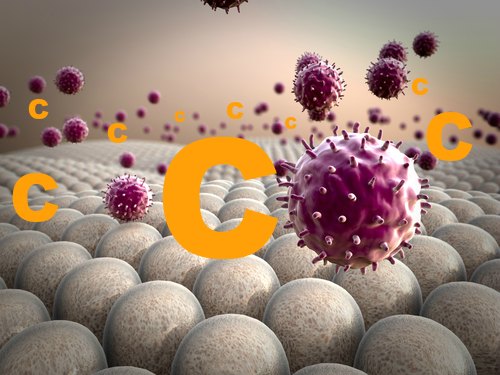
Vitamin C and the Immune system
Harvard Medical school, on their website states that the immune system, for it to function well requires balance and harmony.
So all you physicians out there who hand out immunosuppressant drugs for autoimmune conditions take note..the immune system requires balance and harmony, not suppression, and not to be throttled down using poisonous substances because you are dealing with live organisms that control and modulate our immune system not a bunch a pipes and governors.
However, this very prestigious medical school gingerly states that ‘there appears to be a connection between nutrition and immunity in the elderly’ (..do you think??..), of course there is, but not just for the elderly, but for every living, breathing organism on the planet no matter what age they are.
I like the way they suggest that older people should discuss the question of dietary supplements to maintain a healthier immune system with their physician well versed in geriatric nutrition (do these people exist ?).
So the relationship of Vitamin C and the immune system is well known, but how does it achieve this?
Just as a quick refresher on the immune system.
Our first line of defense defined as a nonspecific response (as opposed to a ‘seen this before’ specific response of Acquired Immunity) consists of the outer part of our body such as the skin and mucous production.
Once a potential invader breaches this defense then the second line of defense goes into action, when part of the Phagocyte ‘special forces’ soldiers are recruited.
Depending upon the area of breach i.e the Phagocyte Macrophages tend to hang around the lung and intestines, however particular invading bacteria that have no cloaking device such as Staphylococcus Aureus or Salmonella Typhi secrete chemicals known as Chemotaxins which act as a ‘breadcrumb trail’ to our defense cells.
Once this occurs the voracious Phagocyte Macrophages spring into action to ‘kill the invader’.
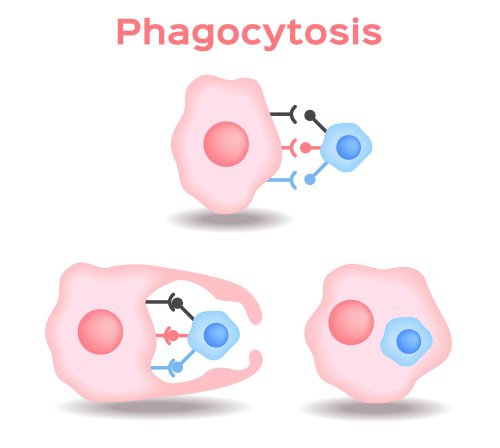
In addition, there are patrolling Phagocyte Neutrophils that are just surveilling the biological neighborhoods looking for invaders.
If the invader has been seen before and is a known ‘Perp’ then the Lymphocyte ‘intelligentsia’ army are recruited from the acquired immunity camp where B cells report for duty and produce Y shaped proteins (antibodies) that stick to antigens on the surface of bacterial pathogens which are used as identification makers. ‘Marked for Destruction’ by patrolling phagocytes (Neutrophils).
B cells tend to operate as a ‘Humoral response‘ e.g within the extracellular fluid areas of the body.
T Cells tend to operate within a ‘cell mediated’ environment where invaders have breached the cells themselves, and are responsible for sending chemical instructions (called ‘Cytokines’) to other parts of the body, when a foreign invader is encountered, so effective weaponry can be administered.
The T Cell also is capable of killing virus infected cells directly and they assist B Cells in the manufacture of antibodies to bind with antigens.
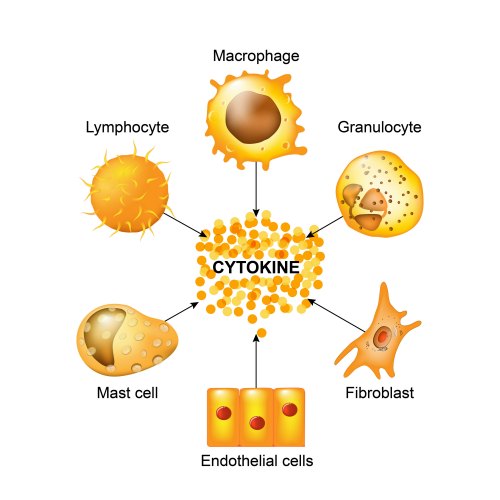
Vitamin C has both a stimulatory and protective effect on immune system cells.
They stimulate the production of Interferons (these are signaling proteins that we discussed in the article Microbiome and the immune system, that provide cell to cell communications, alerting that there are pathogens lurking around in the neighborhood..”who ya gonna call”..pathbusters). The immune system ‘Janitors’ (Phagocyte Macrophage), and patrolling Phagocyte Neutrophils, also benefit from Vitamin C by enhancing their clean-up function as well as their production of Nitric Oxide, a pathogen killer substance secreted by these cells.
Vitamin C supports the integrity of Leukocyte Lymphocyte T cells in addition to the enhancement of their production.
In fact Phagocytes and lymphocytes absorb high concentrations of Vitamin C protecting them from oxidative damage in addition to protecting the Leukocytes themselves from damage when they release pathogenic killer substances such as Superoxide radicals, Hypochlorous acid (Bleach) and Peroxynitrite.
On the flip side, some Pathogenic viruses (e.g Influenza virus) have the capability of producing Neuraminidase, an enzyme that prevents the virus from getting trapped in mucous (one of the body’s first line of defense), but Vitamin C neutralises this defensive enzyme.
The immune access to infection is enhanced by Mucolytic effects (such as cough medicine to break a cough) also enhanced by Vitamin C.
Finally Vitamin C detoxifies Histamine production and enhances prostaglandin production (ref the articles on Metabolic typing which discussed these local cellular signals that are formed by the Omega family of essential fatty acids).
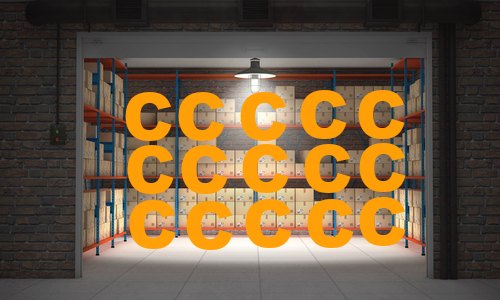
Vitamin C storage
Isn’t it funny how over the years you hear certain claims and speculation that gets repeated among the general population that suddenly you perceive is true like drinking 8 glasses of water/day, only eat 6 eggs/week, and Vitamin C is water soluble so any excess (not needed that day) is excreted out of the body so you need to take it every day. However, Vitamin C is stored:
Adrenals (average storage amount = 30-40mg/100g/ml wet tissue/fluids)
Pituitary gland (average storage amount = 40-50mg/100g/ml wet tissue/fluids),
Eye lens (average storage amount = 25-31mg/100g/ml wet tissue/fluids),
Liver (average storage amount = 10-16mg/100g/ml wet tissue/fluids),
Brain (average storage amount = 13-15mg/100g/ml wet tissue/fluids),
Pancreas (average storage amount = 10-15mg/100g/ml wet tissue/fluids),
Spleen (average storage amount = 10-15mg/100g/ml wet tissue/fluids),
Kidneys (average storage amount = 5-15 mg/100g/ml wet tissue/fluids).
Smaller amounts are found in the lungs,muscle,testes,thyroid, cerebrospinal fluid,plasma and saliva.
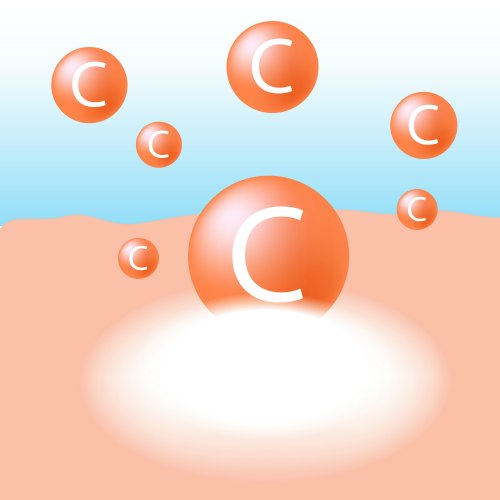
Vitamin C Absorption
pproximately 70-90% of Vitamin C is absorbed at moderate intakes of 30-180mg/day. The total body content at any given time ranges from 300 mg (scurvy levels) to 2g.
Anybody taking large supplemental doses in excess of 1g/day only 50% gets absorbed and I suspect absorption rates diminish as dosing gets higher like our friend having anti-cancer treatment with mega doses of Vitamin C as indicated earlier.
Furthermore I believe that this mega dosing of 100,000 was administered intravenously, and if this was the case there are studies that show that intravenous administered Vitamin C which bypasses intestinal absorption, most if not all, gets excreted into the urine. So take heed Vitamin C Megadosers, you could end up with Vitamin C deficiency.
My last comment is just because you read about Vitamins and minerals providing health benefits that does not mean more is best, and certainly does not mean synthetic vitamins. The body recognises natural sources and it knows how much it needs without you turning orange by overdosing on Vitamin A or ending up with Scurvy. People also have died from drinking too much water.
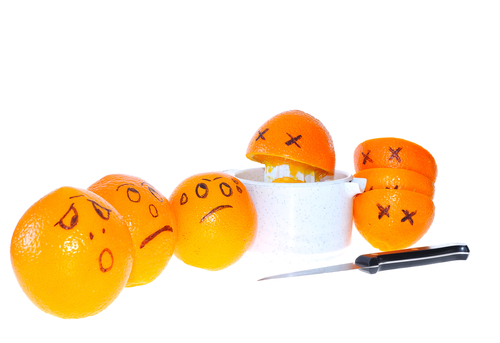
It’s the first time I’ve seen orange juice labeled “freshly killed”.
– Hawkeye
M.A.S.H Quote
Check out the Previous Article in this series:
https://www.extremehealthacademy.com/90-essential-nutrients-part-1-overview/
https://www.extremehealthacademy.com/90-essential-nutrients-part-2-b-vitamins-1-6/
https://www.extremehealthacademy.com/90-essential-nutrients-part-3-b-vitamins-7-12/
References/Acknowledgments:
- Bee Pollen,Royal Jelly,Propolis, Lycopene,Lutein Wikipedia
- Vitamin B4 Canadian Academy of Sports nutrition
- Top 100 foods highest in Beta-Carotene Healthaliciousness Website
- Vitamin A NIH website
- Genetics of Vitamin C A.Douin,R.Godin,B.Page NCBI Current genomics Aug 2011
- How to boost your immune system June 2016 Harvard Medical school
- 17 ways Vitamin C supports a healthy immune system LIVON Website
- Germs help the body produce Vitamin C breakthrough discovery 2015 Sayer Ji Greenmedinfo website
- The inflammatory response Primer crohn
- Vitamin C NIH Website
- Vitamin C Modern Nutrition in health and disease M.Shils, M.Shike, C.Ross, B. Cabellero, R. Cousins
Author: Eric Malouin

